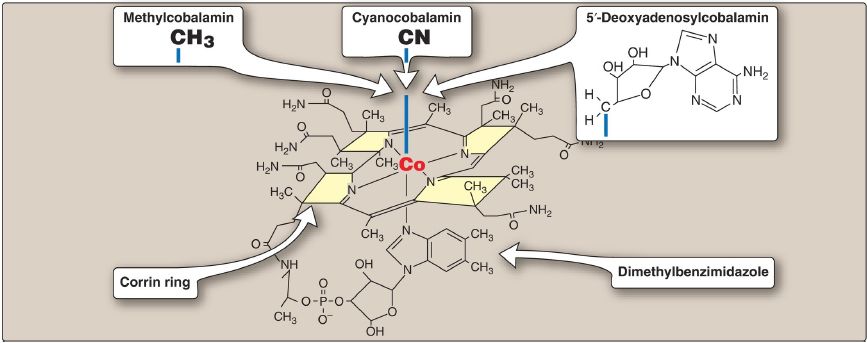

النبات

مواضيع عامة في علم النبات

الجذور - السيقان - الأوراق

النباتات الوعائية واللاوعائية

البذور (مغطاة البذور - عاريات البذور)

الطحالب

النباتات الطبية


الحيوان

مواضيع عامة في علم الحيوان

علم التشريح

التنوع الإحيائي

البايلوجيا الخلوية


الأحياء المجهرية

البكتيريا

الفطريات

الطفيليات

الفايروسات


علم الأمراض

الاورام

الامراض الوراثية

الامراض المناعية

الامراض المدارية

اضطرابات الدورة الدموية

مواضيع عامة في علم الامراض

الحشرات


التقانة الإحيائية

مواضيع عامة في التقانة الإحيائية


التقنية الحيوية المكروبية

التقنية الحيوية والميكروبات

الفعاليات الحيوية

وراثة الاحياء المجهرية

تصنيف الاحياء المجهرية

الاحياء المجهرية في الطبيعة

أيض الاجهاد

التقنية الحيوية والبيئة

التقنية الحيوية والطب

التقنية الحيوية والزراعة

التقنية الحيوية والصناعة

التقنية الحيوية والطاقة

البحار والطحالب الصغيرة

عزل البروتين

هندسة الجينات


التقنية الحياتية النانوية

مفاهيم التقنية الحيوية النانوية

التراكيب النانوية والمجاهر المستخدمة في رؤيتها

تصنيع وتخليق المواد النانوية

تطبيقات التقنية النانوية والحيوية النانوية

الرقائق والمتحسسات الحيوية

المصفوفات المجهرية وحاسوب الدنا

اللقاحات

البيئة والتلوث


علم الأجنة

اعضاء التكاثر وتشكل الاعراس

الاخصاب

التشطر

العصيبة وتشكل الجسيدات

تشكل اللواحق الجنينية

تكون المعيدة وظهور الطبقات الجنينية

مقدمة لعلم الاجنة


الأحياء الجزيئي

مواضيع عامة في الاحياء الجزيئي


علم وظائف الأعضاء


الغدد

مواضيع عامة في الغدد

الغدد الصم و هرموناتها

الجسم تحت السريري

الغدة النخامية

الغدة الكظرية

الغدة التناسلية

الغدة الدرقية والجار الدرقية

الغدة البنكرياسية

الغدة الصنوبرية

مواضيع عامة في علم وظائف الاعضاء

الخلية الحيوانية

الجهاز العصبي

أعضاء الحس

الجهاز العضلي

السوائل الجسمية

الجهاز الدوري والليمف

الجهاز التنفسي

الجهاز الهضمي

الجهاز البولي


المضادات الميكروبية

مواضيع عامة في المضادات الميكروبية

مضادات البكتيريا

مضادات الفطريات

مضادات الطفيليات

مضادات الفايروسات

علم الخلية

الوراثة

الأحياء العامة

المناعة

التحليلات المرضية

الكيمياء الحيوية

مواضيع متنوعة أخرى

الانزيمات
Cobalamin (Vitamin B12)
المؤلف:
Denise R. Ferrier
المصدر:
Lippincott Illustrated Reviews: Biochemistry
الجزء والصفحة:
8-12-2021
2412
Cobalamin (Vitamin B12)
Vitamin B12 is required in humans for two essential enzymatic reactions: the remethylation of homocysteine (Hcy) to methionine and the isomerization of methylmalonyl coenzyme A (CoA), which is produced during the degradation of some amino acids (isoleucine, valine, threonine, and methionine) and fatty acids (FA) with odd numbers of carbon atoms (Fig. 1). When cobalamin is deficient, unusual (branched) FA accumulate and become incorporated into cell membranes, including those of the central nervous system (CNS). This may account for some of the neurologic manifestations of vitamin B12 deficiency. [Note: Folic acid (as N5-methyl THF) is also required in the remethylation of Hcy. Therefore, deficiency of B12 or folate results in elevated Hcy levels.]
Figure 28.5 A, B. Reactions requiring coenzyme forms of vitamin B12. CoA =coenzyme A.
A. Structure and coenzyme forms
Cobalamin contains a corrin ring system that resembles the porphyrin ring of heme , but differs in that two of the pyrrole rings are linked directly rather than through a methene bridge. Cobalt is held in the center of the corrin ring by four coordination bonds with the nitrogens of the pyrrole groups. The remaining coordination bonds of the cobalt are with the nitrogen of 5,6-dimethylbenzimidazole and with cyanide in commercial preparations of the vitamin in the form of cyanocobalamin (Fig. 2). The physiologic coenzyme forms of cobalamin are 5′-deoxyadenosylcobalamin and methylcobalamin, in which cyanide is replaced with 5′-deoxyadenosine or a methyl group, respectively (see Fig. 2).

Figure 2: Structure of vitamin B12 (cyanocobalamin) and its coenzyme forms (methylcobalamin and 5′-deoxyadenosylcobalamin).
B. Distribution
Vitamin B12 is synthesized only by microorganisms, and it is not present in plants. Animals obtain the vitamin preformed from their intestinal microbiota or by eating foods derived from other animals. Cobalamin is present in appreciable amounts in liver, red meat, fish, eggs, dairy products, and fortified cereals.
C. Folate trap hypothesis
The effects of cobalamin deficiency are most pronounced in rapidly dividing cells, such as the erythropoietic tissue of bone marrow and the mucosal cells of the intestine. Such tissues need both the N5,N10-methylene and N10-formyl forms of THF for the synthesis of nucleotides required for DNA replication . However, in vitamin B12 deficiency, the utilization of the N5-methyl form of THF in the B12-dependent methylation of Hcy to methionine is impaired. Because the methylated form cannot be converted directly to other forms of THF, folate is trapped in the N5-methyl form, which accumulates. The levels of the other forms decrease. Thus, cobalamin deficiency leads to a deficiency of the THF forms needed in purine and TMP synthesis, resulting in the symptoms of megaloblastic anemia.
 الاكثر قراءة في الكيمياء الحيوية
الاكثر قراءة في الكيمياء الحيوية
 اخر الاخبار
اخر الاخبار
اخبار العتبة العباسية المقدسة

الآخبار الصحية















 قسم الشؤون الفكرية يصدر كتاباً يوثق تاريخ السدانة في العتبة العباسية المقدسة
قسم الشؤون الفكرية يصدر كتاباً يوثق تاريخ السدانة في العتبة العباسية المقدسة "المهمة".. إصدار قصصي يوثّق القصص الفائزة في مسابقة فتوى الدفاع المقدسة للقصة القصيرة
"المهمة".. إصدار قصصي يوثّق القصص الفائزة في مسابقة فتوى الدفاع المقدسة للقصة القصيرة (نوافذ).. إصدار أدبي يوثق القصص الفائزة في مسابقة الإمام العسكري (عليه السلام)
(نوافذ).. إصدار أدبي يوثق القصص الفائزة في مسابقة الإمام العسكري (عليه السلام)


















